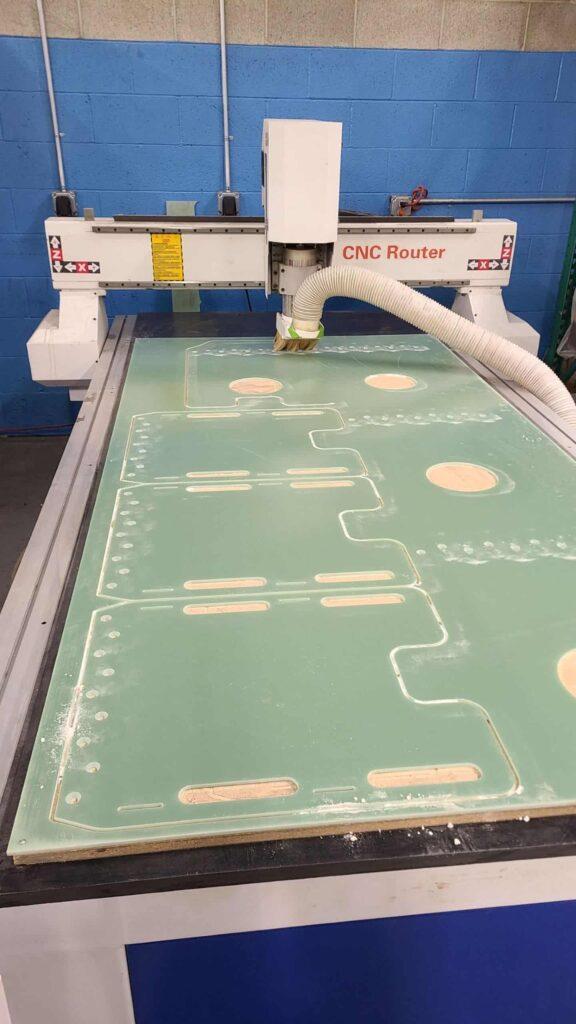Adapting to High-Rate Composite Manufacturing
High-Volume Production
Transitioning from prototyping to rate manufacturing of carbon fiber and fiberglass products requires a fundamentally different approach. In high-volume manufacturing, the emphasis shifts to more durable tooling, robust and repeatable processes and the capability to consistently produce large quantities without sacrificing quality. This shift ensures that each product maintains the same high standards as the first, regardless of the volume.
At Laminate Engineering, we understand the unique challenges posed by high-volume manufacturing. Our expertise lies in creating processes and tools that withstand the demands of large-scale production, ensuring reliability and efficiency from start to finish.
Strategic Planning for Production
The setup or planning stage is critical to the success of rate manufacturing of carbon fiber and fiberglass products. This stage involves several key elements:
01
Understanding Rate and Demand
Accurately forecasting the rate or demand for your product is essential. This understanding guides the entire planning process and ensures that production meets market needs without over or underproducing.
02
Theory of Constraints
Identifying and controlling bottlenecks using the theory of constraints helps maintain smooth and efficient production flow.
03
Defining Takt Time
Establishing a takt time, or the rate at which each process step needs to be completed to meet customer demand, ensures that production is balanced and efficient.
04
Build to Order vs. Inventory
Deciding whether to build to order or maintain an inventory Kanban system affects how production is managed and inventory is controlled.
05
Investment in Setup
A significant upfront investment in proper setup, including potential automation where cost-effective, yields a high return on investment over the product’s life.
06
Controlling Variables
Understanding and controlling variables in the manufacturing process is crucial. This includes setting up quality control measures to ensure that all product requirements are met and implementing in-process inspections to catch problems early.
Production Execution
Executing a rate manufacturing plan effectively involves several key practices:

Comprehensive Training Program
Implementing a robust training program facilitates quick learning for employees and promotes cross-training for flexibility. This ensures that the workforce can adapt to changing demands and maintain high productivity.
Minimizing Work-In-Process Inventory
Keeping work-in-process inventory low (moving product through the process quickly) provides rapid feedback for improvements or defect detection, simplifies inventory management, and reduces overall costs.
Continuous Improvement Culture
Fostering a culture of continuous improvement is essential for long-term success. While workers naturally become more efficient over time, applying lean manufacturing principles accelerates this progress. Emphasizing continuous improvement helps identify areas for enhancement, streamline processes, and maintain a competitive edge.
Feature Sampling
Minimizing risk through feature sampling and controlling critical features that cannot be easily inspected afterwards ensures consistent quality.
Planning on scaling up production?
At Laminate Engineering, our commitment to excellence in rate manufacutring of carbon fiber and fiberglass products ensures that every product meets the highest standards of quality and efficiency. By investing in thorough planning, robust execution, and continuous improvement, we help you achieve scalable success and long-term profitability. Contact us today to learn more about how our manufacturing services can elevate your products’ production capabilities.
